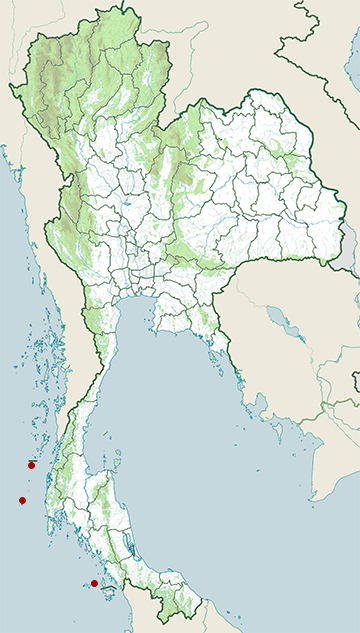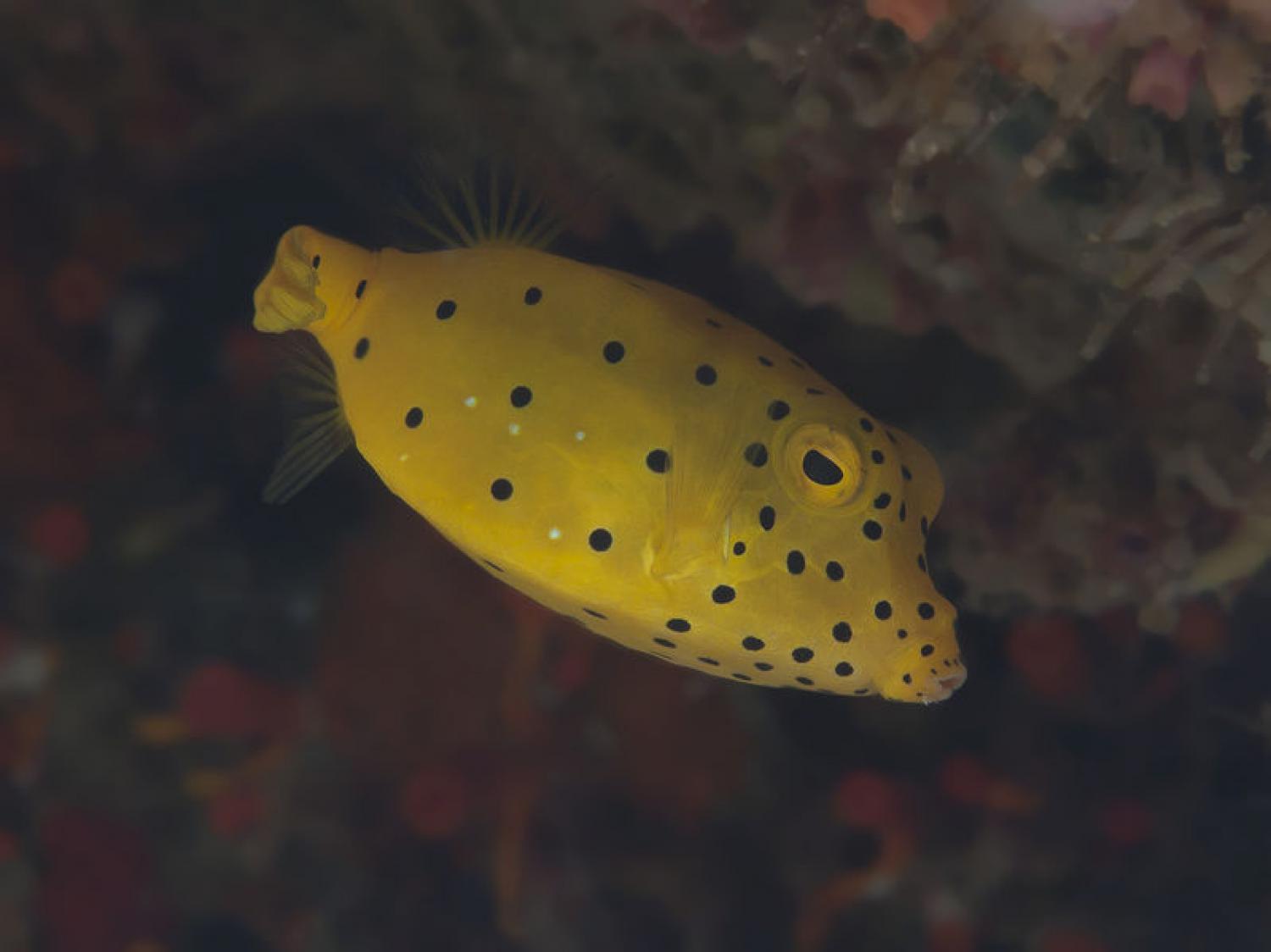Species of Thailand
Yellow boxfish
Ostracion cubicus
Carolus Linnaeus, 1758
The yellow boxfish (Ostracion cubicus) is a species of boxfish. It can be found in reefs throughout the Pacific Ocean and Indian Ocean as well as the south eastern Atlantic Ocean. It reaches a maximum length of 45 cm.
As the name suggests, it is box-shaped. When juvenile, it is bright yellow in color. As it ages, the brightness fades and very old specimens will have blue-grey coloration with faded yellow. It feeds mainly on algae, but will also feed on sponges, crustaceans and mollusks.
The fish's diet consists of marine algae, worms, crustaceans, mollusks, and small fish.
When stressed or injured it releases poisonous proteins from its skin that may prove lethal to any fish in the surrounding waters. The bright yellow color and black spots are a form of warning coloration (Aposematism) to any potential predators.
They are solitary animals. Breeding occurs during the spring, in small groups that consist of 1 male and 2 - 4 females.
In 2006, Mercedes-Benz unveiled its Bionic concept car, which was inspired by the shape of the yellow boxfish. It was assumed that due to the extreme agility with which boxfish maneuver, that their shape was aerodynamic and self stabilizing. However, analysis by scientists suggests that boxfish agility is instead due to the combination of an aerodynamically unstable body and the manner in which the fish use their fins for movement.
This article uses material from Wikipedia released under the Creative Commons Attribution-Share-Alike Licence 3.0. Eventual photos shown in this page may or may not be from Wikipedia, please see the license details for photos in photo by-lines.
Scientific classification
- Kingdom
- Animalia
- Phylum
- Chordata
- Class
- Actinopterygii
- Order
- Tetraodontiformes
- Family
- Ostraciidae
- Genus
- Ostracion
- Species
- Ostracion cubicus
Synonyms
- Ostracion argus, Wilhelm Peter Eduard Simon Rüppell (1828)
- Ostracion tuberculatus, Carolus Linnaeus (1758)
Photos
Please help us review our species pages if wrong photos are used or any other details in the page is wrong. We can be reached via our contact us page.
Range Map

- Similan Islands
- Surin Islands
- Tarutao National Marine Park

